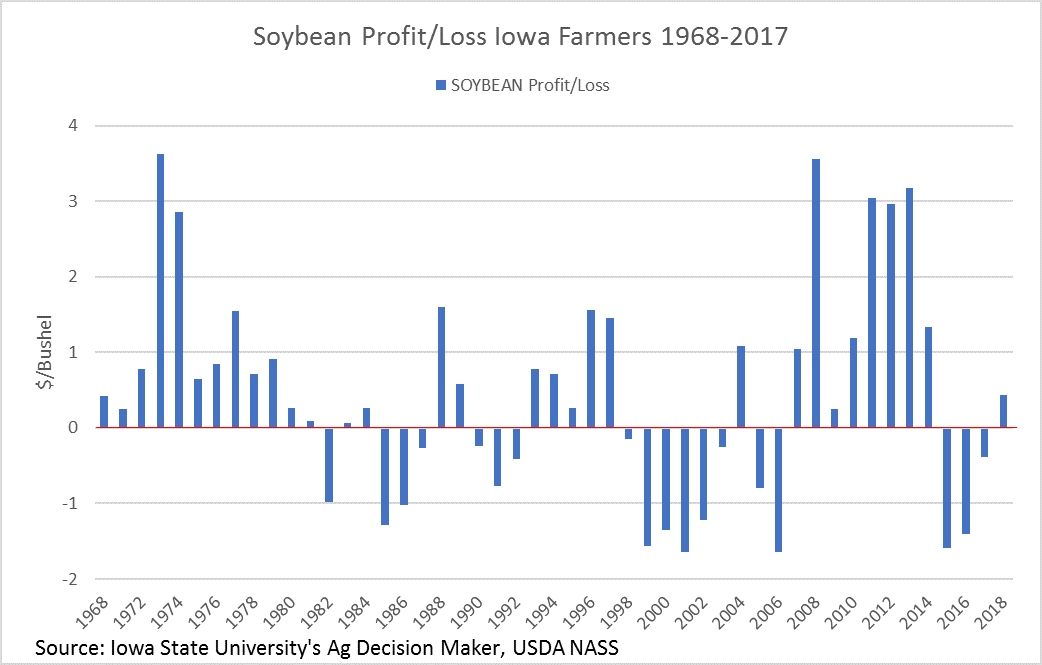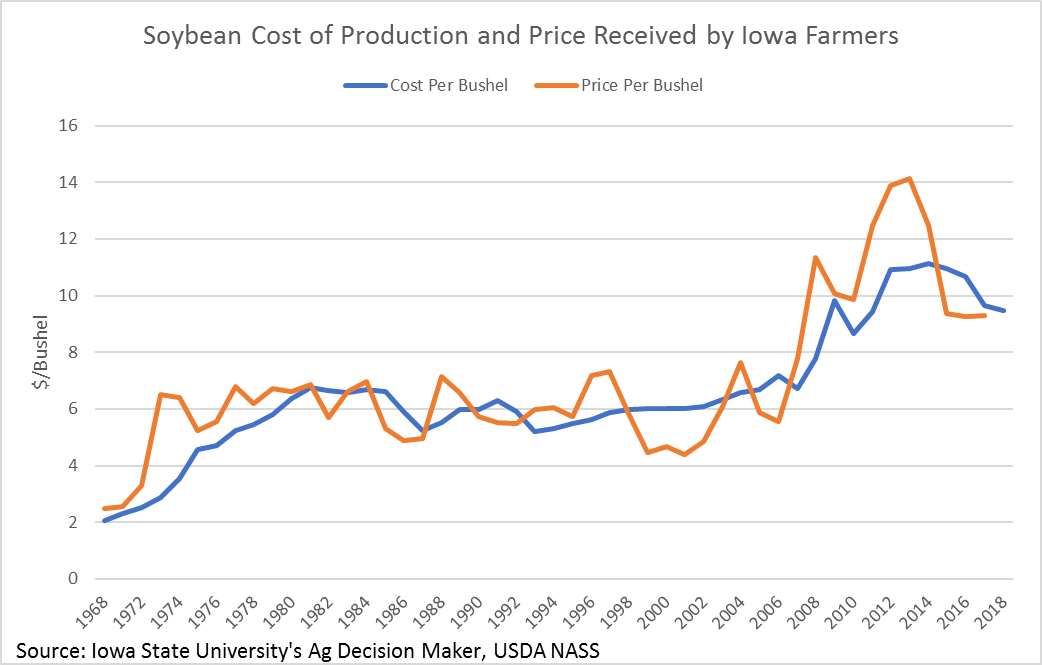Soybean Profitability
Author
Published
8/8/2018
Soybeans, originally grown in China, migrated to North America in the 1800s and then to Iowa by the 1900s. Soybeans were grown for the purpose of feeding animals originally, and as scientists began to learn of the nutritive qualities increased production and uses began. In 2017 the average soybean yield in Iowa was 56.5 bushels per acre. As Figure 1 denotes there were periods of high profitability in the 1960s-80s and again from 2007-2014. These periods of larger profits are primarily driven by high commodity prices.

Figure 1
Like with corn the diversity of profits and losses, must be supplemented with the fact there are government programs that assist farmers in hedging against the risks of farming (weather variability, and price volatility). These programs began around the 1920s and have been present in different forms since then. Since 2014 these programs for most major commodities has been provided through the Agriculture Risk Coverage (ARC) and Price Loss Coverage (PLC) programs.The costs of soybean production are generally smoother over time when compared to price. Additionally, as can be viewed in 2008 and 2009 there are indications that because of expectations when prices spike in a given year there can be a lagged effect on costs the next year.

Figure 2
On average throughout the entirety of the lake half century soybean profits have been $0.44/bu. In the last 5 years the average profit has been $0.23, however, when the significant profits of the last decade are factored in that average profit number jumps to $1.22. This 10-year average is $0.72 higher than the same figure for corn profits in the last decade. Additionally, soybeans were able to maintain a positive profit number, on average, during the last decade.Want more news on this topic? Farm Bureau members may subscribe for a free email news service, featuring the farm and rural topics that interest them most!